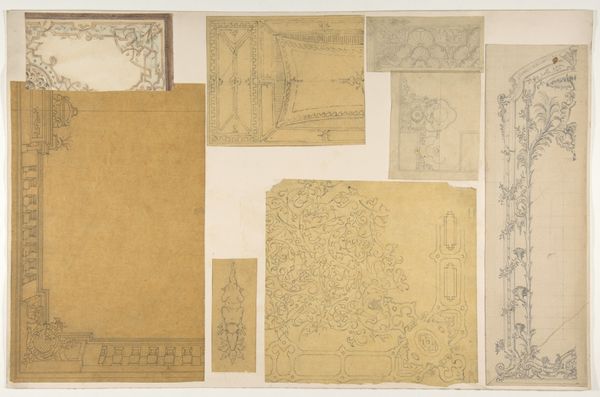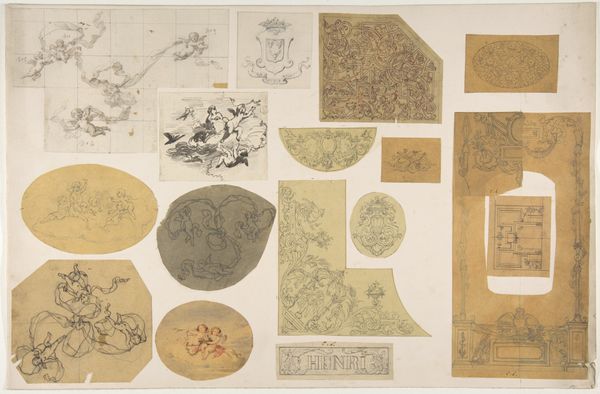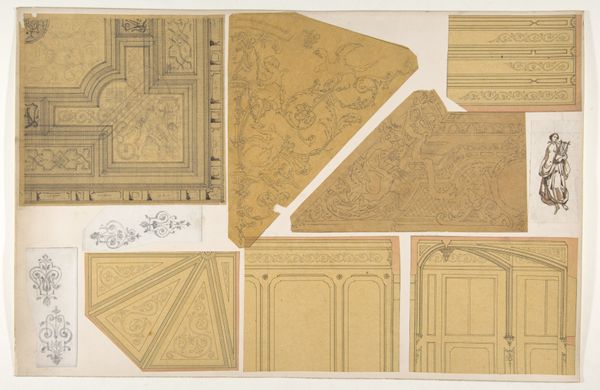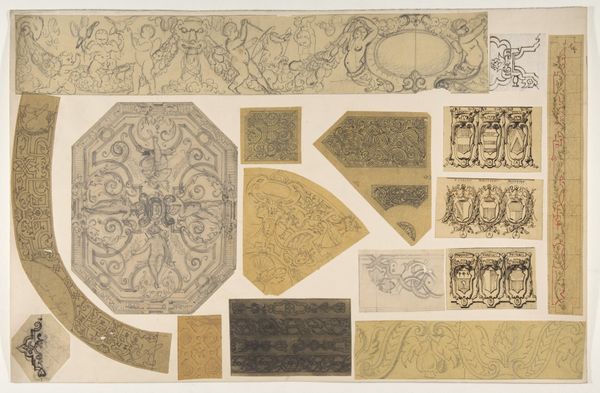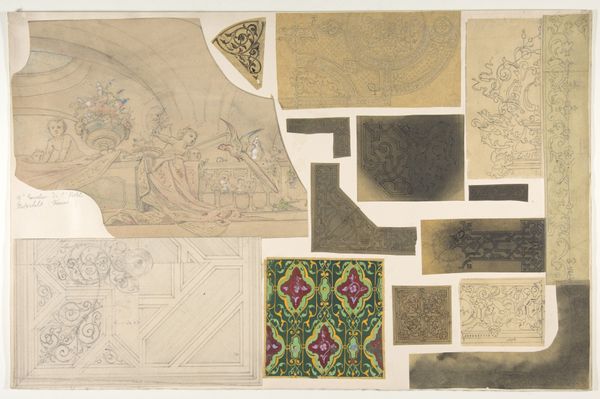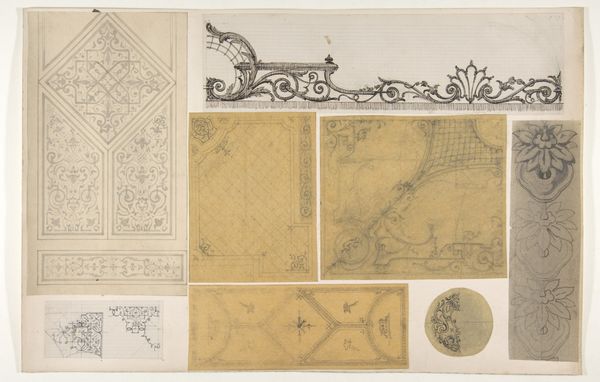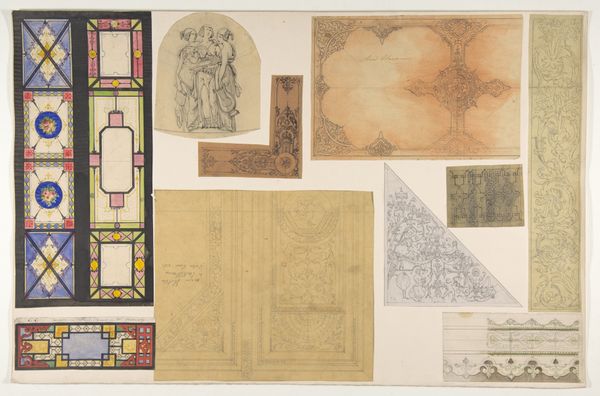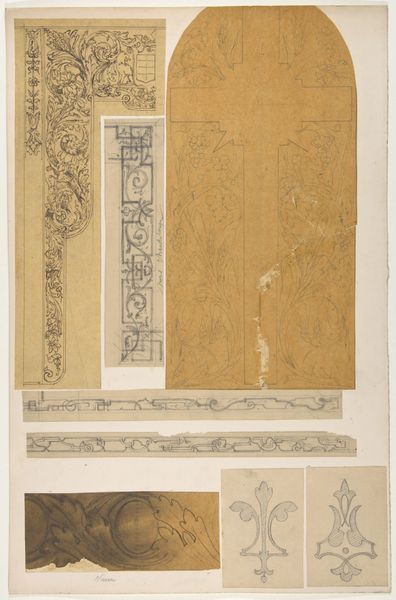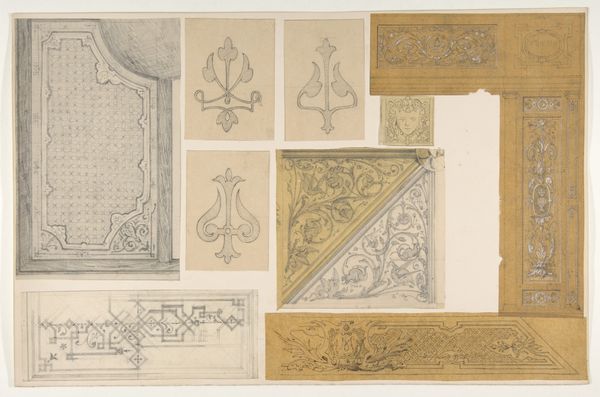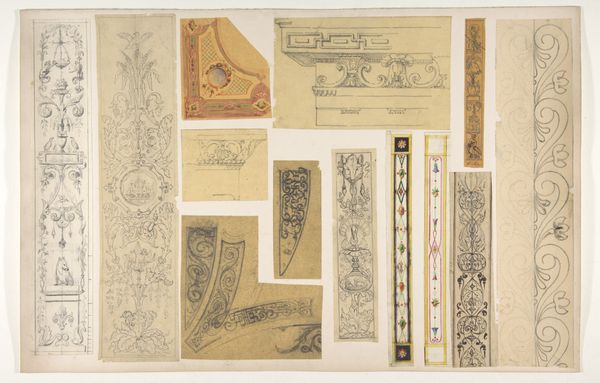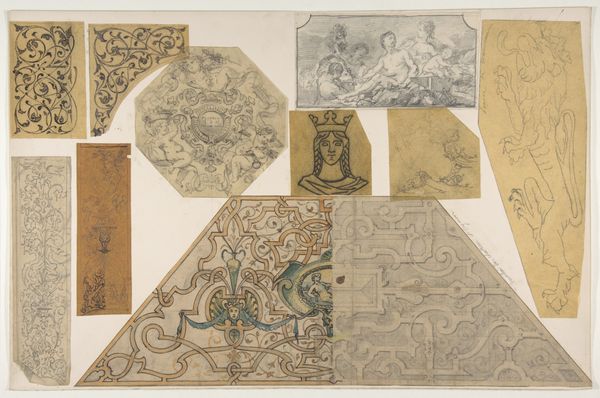
Sixteen designs of the decoration of walls and ceilings 1845 - 1900
0:00
0:00
drawing, print
#
drawing
# print
#
history-painting
#
decorative-art
Dimensions: sheet: 12 3/8 x 18 3/4 in. (31.4 x 47.7 cm)
Copyright: Public Domain
Editor: So, this is "Sixteen designs of the decoration of walls and ceilings," dated from 1845 to 1900 by Jules-Edmond-Charles Lachaise. They’re drawings, likely prints. It's interesting how many different patterns and scales there are here. What do you see when you look at this collection of designs? Curator: It strikes me as a fascinating commentary on the cultural value placed on ornamentation during the mid- to late-19th century. Think about the social implications – who would have commissioned and lived with these intricate designs? How do these designs speak to class and power? Editor: Well, they certainly look ornate, probably for wealthy homes or public buildings, I imagine. What elements in these sketches point to that, specifically? Curator: The sheer detail, the floral motifs, and geometric precision all suggest luxury and status. But let's also consider the historical context. This was a period of massive industrial change, yet these designs look back towards classical and Renaissance styles. What does this juxtaposition tell us? Are these designs maybe resisting the anonymity of factory production? Editor: That's a great point. Maybe these intricate designs represent a longing for a pre-industrialized past. The labor and skill involved feel very human, almost a rebellion against the machine. Curator: Exactly. And within that resistance, we can even start asking questions about gender. Who was making this kind of art, and for whom? Considering that decoration was considered ‘feminine’, does the art reflect and reinforce this bias, and should it? Editor: I hadn't thought about that angle. So, by examining these seemingly simple sketches, we can actually unpack a whole host of social and cultural issues related to class, industrialization, and even gender? Curator: Precisely. Art, even in its decorative form, is never truly separate from the world it inhabits. By exploring its relationship with those broader systems, we gain so much more.
Comments
No comments
Be the first to comment and join the conversation on the ultimate creative platform.
